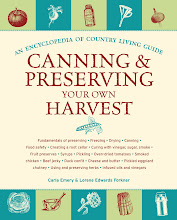Let’s talk about birds—geese, specifically. When I think of ideal household pets or livestock, geese are not the first creatures to come to mind. Actually, until about a week ago, I thought of geese only as large, flapping, non-cuddly producers of gooey droppings. Thankfully, Carla Emery has forced me to reconsider this opinion. If you are feeling similarly on the fence about these great waterfowl, here are a few fun facts that may help sway you in their favor.
Geese are basically a hardy cash crop.
Believe it or not, geese can thrive on no more than grass. “In fact, except in winter, geese fare quite well with very little care. It’s not unusual to see them foraging through snow. They are extremely resistant to disease and parasites, and they need only a little shade in summer and a bit of shelter against extreme cold. Waterfowl are actually hardier in resistance to poultry diseases than chickens and seldom suffer disease when kept in small flocks. (However, when waterfowl are raised in very large numbers in a small area, they, like all animals under those conditions, are more likely to be affected by disease.)” Geese are generally raised for their meat, but will also lay eggs for an amazing number of years. (Carla Emery also suggests that this could be an example to us on the benefits of plain living and moderation.)
They can moonlight as watchdogs
Geese often form strong attachments to their owners and can manifest this connection in useful ways, like sounding the alarm when a predator or unfamiliar visitor enters the scene.
“Sylvia Nelson, Hillsdale, WY, wrote me, ‘Our first batch of geese, gray Toulouse, imprinted on me and just worship me. We also have a few white Embdens and 2 crossbreeds, hatched out last season, our first successful hatching. Toulouse and Embdens are supposed to be gentle, but a couple of years ago we learned how fierce they can be. My husband woke up one night, with a terrible ruckus going on in the duck and goose yard. He looked out, and saw a fox in the yard. We had seven geese at the time, and each one had a mouthful of fox, and were each pulling in a different direction. The next morning we found a couple of scratches on the geese, no missing geese or ducks, and chunks of fox fur all over the yard, plus a 1-inch-square piece of hide. The fox never returned!’”
Geese are classier animals than you might think.
Carla Emery points out that certain goose breeds carry themselves with a certain amount of grace, and that they look nearly as lovely on the water as swans. Additionally, geese tend to act fairly conservatively in regards to mating.
“Geese generally choose partners in the fall. Once the groupings are established, it is difficult to add more geese. Geese do not mate on first encounter like so many other animals. If your proposed partners are new to each other, you’ll have to allow them time to get acquainted. Many ganders do not change partners easily. Previous companions have to be completely absent for as long as a month before such a gander will accept one or more new ones.”
Since geese are such low-maintenance, useful livestock, I am forced to reconsider my aversion to their size and droppings and admit that their desirable qualities make them entirely worthwhile to keep. Geese can make a fine roast for a holiday dinner, and their eggs can be prepared just as you would use one from a chicken (though they are considerably larger, so you use fewer). Goose feathers can be plucked from a live or butchered bird and used to make pillows, quilts, beds, clothing, and even quill pens!
If you’re still not convinced, just wait until your mouth starts watering over one of Carla Emery’s favorite goose recipes!
Braised gosling
This is a delicious way to prepare a bird that has just reached roasting size. Use a roaster with a rack at the bottom of it. Put a chunked carrot, an onion, a turnip, a pared and cored apple, and a stalk of celery on the grating. Lay the bird on that. Rub salt, pepper, and a little sage on it. Pour some boiling water in the side. Cover and roast at 350 ̊F, 15 minutes to the pound. Baste with butter.
To make the gravy, remove the gosling when done, and mash the vegetables by pouring them and the cooking liquid through a sieve into a bowl. Skim away as much of the grease as possible after it has set a moment. Chop the cooked giblets (except the liver, which you discard), and add them to the broth. Put about 3 T. of the goose grease into a frying pan. Thicken with flour, then add the broth gradually, stirring the lumps out before adding more liquid, until it has all been added. Season your gravy to taste. Serve the bird on a platter, the gravy in a bowl. Have mashed potatoes ready to pour the gravy over. Applesauce, and green peas or lima beans will complete a wonderful meal.








No comments:
Post a Comment